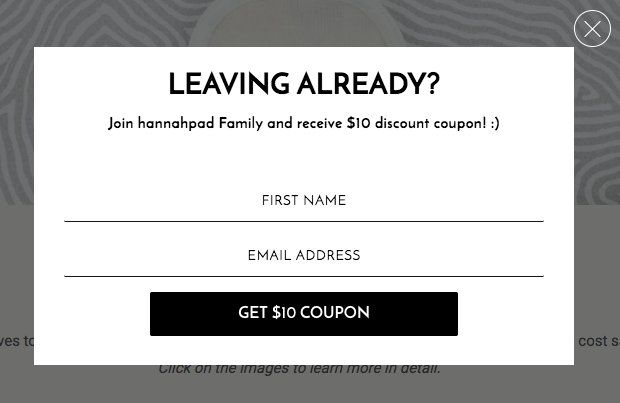Popups have always been infamously labeled as intrusive and annoying. Many digital marketers even go on to say that Google can impose penalties on your website for using pop-ups.
But you still see a lot of websites using them. Now you’re confused.
So you start asking questions like -
“Do popups really hurt your SEO?” “If it does, how do you use them cautiously, so it doesn’t affect your SEO?”
The good news, however, is that Google won’t penalize your website for using popups. But for that to happen, you need to use them appropriately and without affecting the user experience on your website.
In fact, instead of affecting your website negatively, popups can effectively act as a means to improve your conversions.
Studies show that the conversion rate of the best-performing popups is 9.3%, and the average conversion for all popups is 3.09%.
Now at first glance, 3.09% might sound like a small figure. But to put things into perspective, this tiny percentage would mean more than 3,000 subscribers for you if you have about 100,000 visitors to your website.
This can make a huge impact on your overall conversion goals. So instead of simply dismissing popups as intrusive, many marketers are thoroughly using them to boost their conversions. If you, too, want to do the same, this post is for you.
In this post, we’ll tell you how to use popups on your website without hurting your SEO. So let’s begin.
1. Make Them Non-Intrusive
Many marketers use popups so aggressively that the very essence of the website becomes disoriented. Such popups will often cover a large portion of the website and are difficult to dismiss.
Google hates such popups and can penalize you for using them on your website. It does that because such stubborn popups negatively affect the overall experience of the users and force them to exit.
And user experience is one of Google’s 100 major ranking factors. So if you don’t want your SEO to be devalued by Google, always make sure that your popups are non-intrusive in manner.
As long as your popups are letting your users access the content well, you’re on the safe side.
However, if you’re required to display any legal notification to keep your users informed, such as age verification or the cookie use notification, then Google won’t penalize you even if your popup restricts users from accessing your content.
But that doesn’t mean that you aren’t allowed to use other forms of popups. As long as your popup doesn’t take 15% or less of your screen, and is easily dismissable, you can use any popup on your website without any hesitation.
A good way to use popups safely is to avoid using full-screen overlays. Try using slide-in boxes and top banners instead.

Such banners don’t usually block content for users and allow users to continue browsing without being aggressively intrusive.
2. Use Exit-Intent Popups
One of the easiest ways to decrease your website bounce rate is to use an exit-intent popup. Just like the name suggests, such popups appear on the website the moment a user is about to leave your site.

By using these popups, you are actually trying to distract your users from exiting the website by showing them something more interesting.
Such popups aren’t penalized by Google even if they cover a large portion of the screen.
The confirmation comes from Google’s search advocate John Mueller himself. So if you have been stopping yourself from using exit-intent popups for fear of being punished by Google, take a sigh of relief and start using them. They are super safe and don’t contribute to devaluing your website’s SEO.
3. Time Your Popups
Another brilliant way of using popups without affecting your SEO is to time your popups. Have you ever landed on a website that displays a popup a second after you land on it? If you did, you know how annoying those popups are.
Instead of doing any good, these popups will only chase your visitors away from your website. As an alternative, try using timed popups.
One of the best things about most popup tools is that it lets you have full control over the way it is displayed on your website.
So take advantage of it and display it just around the time your reader finishes the post. That way, it would neither annoy your users nor Google, and you’ll also be able to save your website from the penalties too.
However, the trick to making such timed popups effective is by creating brilliant content that hooks readers till the end. So if you haven’t paid attention to your content quality, focus on improving them before using the timed popups.
Some popups definitely appear intrusive and annoying. And by creating such popups you give Google all the rights to devalue your SEO.
But with a proper strategy, you can not only make your popups less intrusive but can also save your website from all the penalties you might be imposed upon.
About the Author:
Syed Balkhi is the founder of WPBeginner, the largest free WordPress resource site. With over 10 years of experience, he’s the leading WordPress expert in the industry.
You can learn more about Syed and his portfolio of companies by following him on his social media networks.


